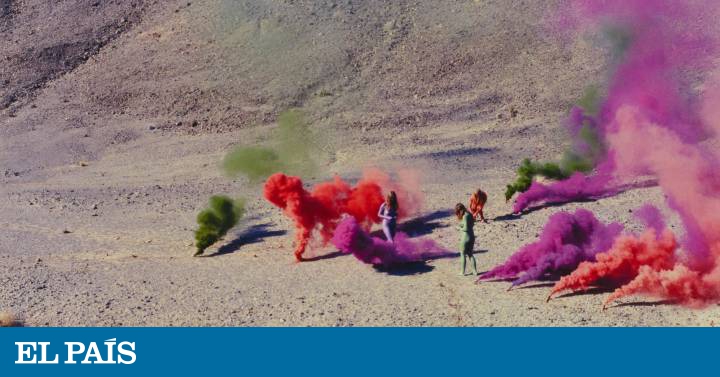In art, nature continues to seek expression. As a value system, it claims all our attention on the flow of thought and action that still remains to be created, to be lived. In that sense, it is a promise that anticipates an ideological and aesthetic attitude, although ironically the most attractive feature that artists see in it is precisely that which it does not have, the technological one, and they insist on imitating natural phenomena within the white cube to Convince ourselves, not even for the duration of a television commercial, that we are inside a doll's house, with the walls exposed and no roof. An improved nature? where the sun's rays do not burn, the rain does not wet and the cyclone does not devastate. The patterns that have so far been assimilated to success in theme parks / museums are beginning to seem unsustainable. Very soon the experience of contemplating a landscape by Claude Lorrain without masses of people around will be considered something close to the erotic, such as writing a poem by hand or really feeling the sun on our body in the sand.
In another accelerated attempt to represent nature from an ecological perspective, the Danish Olafur Eliasson perseveres in the paradoxical relationship between physical phenomena and technology. His Wunderkammer project - accessed through the free application Acute Art from the portal of the Serpentine Galleries in London - uncovers his sculptures made with an augmented reality program, so that the visitor can play with the king star (an elf replica of his Weather Project, presented at the Tate Modern in 2003, with which he inaugurated the fashion of walking around the museum with sunglasses), the rainbow, waterfalls or clouds that in our path discharge dry rain. What a time when the artist literally wanted to paint a storm!
If Duchamp was going around selling the boîte-en-valise with his miniature readymade , Eliasson places an aurora borealis in your living room or transforms two marbles into Mercury and Pluto bouncing between them. He argues that “physical distancing conditions our lives and it is essential that we surround ourselves with things and atmospheres that really matter to us. Art allows us to actively embrace what lies on the border between the known and the unknown ”. The titles of his ambitious illusionist experiments also seek the empathy of a 15-M audience, such as Rainbow Assembly and The Parliament of Possibilities, which —he assures— “will serve to explore the dynamic reality between art and life”.
In its purely analogical aspect, nature is a path of discovery. Also of fantasy, such as the one that led Joseph Cornell to search for pieces of glass, compass without needles and seashells in the markets and storerooms of the Bowery. With the same animosity, Oriol Vilapuig (Sabadell, Barcelona, 1964) toured the towns of the Vall d'Aneu in search of traces and marks of life, finding in that area of Pallars (Lleida) an eternity map in its exact disposition on a stone. Using the frottage method , he worked on ancient stone piles from Romanesque churches, from which he extracted bas-reliefs with marks of animal fossils and flora. In total, 80 papers that are exhibited in one of the MNAC's Romanesque art rooms (and now, on the museum's website), creating a more effective sounding board, in its symbolic aspect, than the possibility of walking inside a 150-meter rainbow like Eliasson's for the ARoS Kunstmuseum in Aarhus, Denmark. Vilapuig makes visible the mark of lightning on the earth (a lizard struck by lightning) or the trail of a snake on a dry river, while wondering what the images of us expect and what forms of life all that nature that has just embodied appear in our time.
There is nothing boring in these manifestations of the primal; on the contrary, they represent our need for salvation in the face of a dying planet. The same as for land art artists . The deserts and the bare mountains were scenes of exuberant masculinizing conquests, the smoke performances and the colorful fireworks that Judy Chicago executed with her fighting companions during the sixties and seventies are a feminist — heroically feminine — version of the natural environment. The Nevada Museum in Reno has just bought the complete archive of these atmospheres (photographs, remastered videos, drawings), an advertisement that is perfect to remember that, above any virtual prodigy inside the museum or at home, technology is more useful as Rescue tool and archive of works that in their day had no intention of crossing space and time, as they were simply actions made at the scale of the flesh-and-blood individual in his voluntary relationship with a specific horizon and sunlight.
Wunderkammer . Olafur Eliasson. Acute Art. Serpentine Galleries. London. Until April 1, 2022. In real life. Guggenheim museum. Bilbao. Starting June 1.
Are. Shadows and figurations in the Valls d'Aneu. Oriol Vilapuig. Museu Nacional d'Art de Catalunya. Barcelona. Until September 27.

